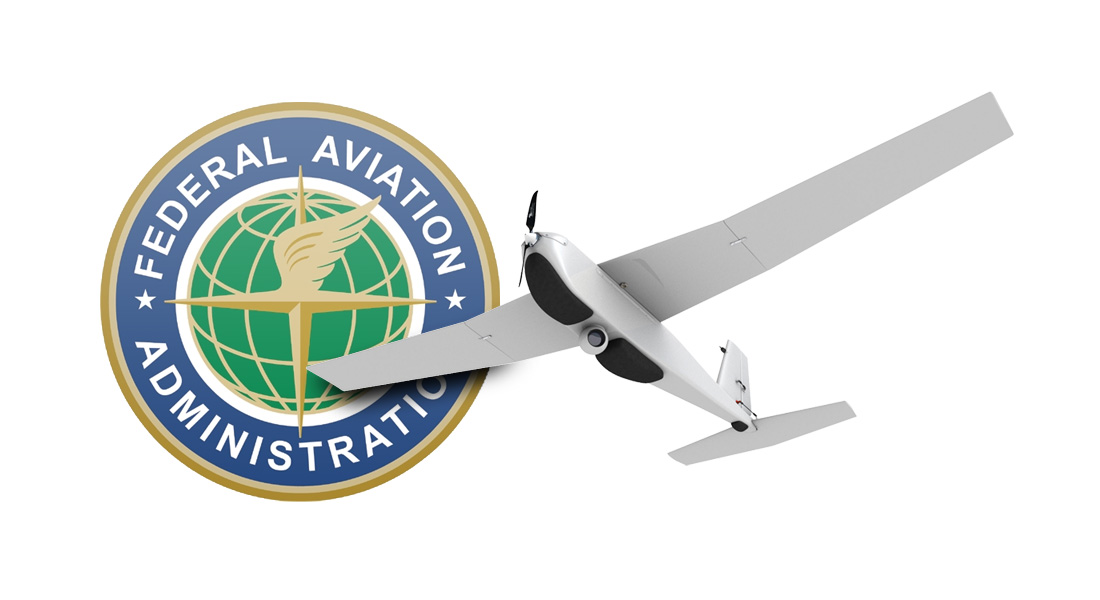
Robohub.org
How important is the FAA’s first commercial licence approval?

On June 10th, the FAA issued a press release announcing their approval of the first commercial UAS flight over land. According to Transportation Secretary Anthony Foxx, this represented an “important step toward broader commercial use of unmanned aircraft” in the US. What do experts inside the drone community think of this development?
Earlier this month, the FAA issued what is known as a certificate of authentication (COA) to oil giant BP and UAS manufacturer AeroVironment to fly a Puma AE for the purpose of aerial surveying in Alaska. It was the first time the FAA has authorized a commercial UAS operation over land, possibly signalling to the drone industry that there may be movement before the 2015 deadline the FAA has been given to publish regulations for commercial drone use. For years the American drone industry has been frustrated at the FAA’s slow action on creating a framework for the legal commercial operation of drones in US airspace, while commercial drone businesses take off in other countries where such frameworks already exist.
The first to note is that this is not the first US commercial license approval – only the first one over land. The FAA has previously granted licence to Puma and Insitu’s Scan Eagle to operate over Arctic waters, and the recent announcement cites the Puma’s safety record in overseas operations as a factor in their authorization of the COA. Also important is that the recent certification was propped up by Puma’s long military history.
But Patrick Egan of sUAS news argues that drone operation in combat zones is not the same as operating drones within US territory:
 Patrick Egan, sUAS News
Patrick Egan, sUAS NewsOverlaying the military model onto the civilian use of drones is a mistake … The Puma has lots of hours in Afghanistan, and it’s hard for Mom-and-Pop businesses to emulate that. It’s an unfair economic advantage.
So what hope should smaller businesses have that commercial airspace will open up for drones in the near future? Chad Partridge of 2d3 Sensing, a leader in motion imagery and computer vision software across unmanned system markets, says:
 Chad Partridge, 2d3 Sensing
Chad Partridge, 2d3 SensingUnder the Freedom of Information Act, the FAA has on multiple occasions released to the public the COAs they have issued. But I would be more curious as to who they have denied, specifically those relating to commercial UAS operations. The perception is that commercial UAS applications have been denied, but to what extent are commercial businesses even requesting COAs? Has the perception been that they shouldn’t even try? Hopefully this commercial COA issuance provides precedence signaling businesses of all sizes to engage in the COA process. The hope is that we will see a steady stream of commercial COA issuances from this point forward at least until more UAS friendly rule making emerges.
The fact that oil giant BP is the lead recipient of this first commercial COA underpins Partridge’s argument. When asked if it is lobbying efforts by big industries that will most likely pave the way for increased commercial drone use, Egan agrees:
 Patrick Egan, sUAS News
Patrick Egan, sUAS NewsIt’s no coincidence that BP is behind the announcement. The oil and gas industry have tons of lobbying power. I think we’re also going to see some action in the film industry because they have lots of money, lots of lobbying power and lots of friends in high places. That helps.
From the beginning, the FAA has stated that safety and security have been the prime factors both in considering specific COAs and in developing the general framework for the new regulations: no one wants to see drones colliding with other aircraft or with people on the ground. This cautious approach is indeed in keeping with their decision to issue BP’s COA: the application was for flight over a relatively unpopulated area of Alaska.
 Chad Partridge, 2d3 Sensing
Chad Partridge, 2d3 SensingThe recent announcement signifies progress, but I have tempered enthusiasm considering the result is delivery of a single COA in a low risk environment. Yes, this COA is for the first commercial UAS operation over land, and that is great, but most of us in the UAS community would have liked a few of these COAs to already be in effect for similar operations within relatively innocuous use cases.
 Patrick Egan, sUAS News
Patrick Egan, sUAS NewsThe FAA says there is a big safety concern, but statistically that hasn’t really materialized yet. UAS’ are not taking down aircraft or crashing and hurting people, and we know now that there are hundreds of thousands (if not millions) of these remotely piloted aircraft out there. Yet things could be even safer, and a standard list of common sense guidelines would make it safer for everyone … you don’t fly over people, you have to have liability insurance, you have to take a 25-question online test so that at least you know basic rules – it’s not rocket science, and most people want to operate within the law. We’ve been working on a program like this since 2007 but no one has had the political will to embrace it. The FAA needs to take a fresh look at this, or this “yet” will become an increasingly distinct possibility.
Is the US losing market share because it’s dragging its heals?
 Patrick Egan, sUAS News
Patrick Egan, sUAS NewsThere are more than 1100 commercially certified operators in Europe, and there are more than 14K commercially certified operators in Japan. There are three here in the US … Absolutely, we are losing market share, and we are losing in terms of technological advancement. But unmanned aircraft are not a disruptive technology all on their own. What they really offer is self-guided data collection at an affordable price point. The real advantage of this technology is the mushrooming effect it can have on ancillary businesses. Cartographers, the GIS industry, farmers, oil and gas – the efficiency that commercial drone operation can afford all of these industries is really where the promise is. Drone inspection, for example, can be done [at a fraction of the cost of manual inspection] in many industries. So the real loss comes from the fact that ancillary businesses are not benefiting from this technology, and the efficiencies aren’t trickling down to consumers. The potential is for this to grow into an economic engine.
So, what’s the final on word on the importance of the FAA’s first commercial license approval?
 Chad Partridge, 2d3 Sensing
Chad Partridge, 2d3 SensingA step forward? Yes, but we are hopeful for more.
 Patrick Egan, sUAS News
Patrick Egan, sUAS NewsIt’s a good start but we need more action.
tags: c-Aerial, cx-Politics-Law-Society, Flying, opinion, policy


